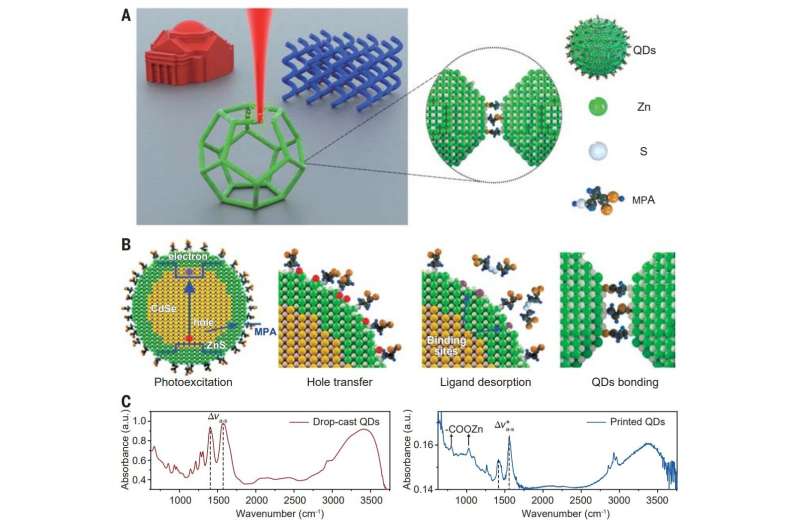
A team of researchers from
Tsinghua University, working with a colleague from Jilin University, has
developed a new 3D nanoprinting technique that uses semiconducting quantum
dots. In their paper published in the journal Science, the group describes
their new technique and provides examples of resulting 3D objects. Jia-Ahn Pan
and Dmitri Talapin with the University of Chicago provide a Perspective piece
in the same journal issue regarding more versatile 3D printing devices and the
work done by the team on this new effort.
The use of 3D printing to make three-dimensional objects has expanded greatly over the past decade, leading to new products and faster ways to create demonstration objects. But, as the researchers with this new effort note, 3D printers primarily use materials based on polymers, limiting the type of products that can be made. Manufacturers say they would buy 3D printers capable of printing products with optical or electronic properties. In this new effort, the researchers in China have taken a big step in that direction.
The new method involves using semiconductor quantum dots (nanocrystals made of cadmium selenide, covered with zinc sulfide and with caps made of 3-mercaptopropionic acid ligands) as additions to printing material. The dots are activated using a laser. Photons from the laser are absorbed by a nanocrystal, resulting in a change in chemistry that allows for bonding between the quantum dots—a process known as two-photon absorption. In their setup, absorption of the protons was only possible in places where the light intensity was at its highest. This allowed for creating bonds smaller than the wavelength of the light.
The researchers note that their technique preserves the optoelectronic properties of the quantum dots, which means that 3D products that are printed using the ink made with them can be used in optoelectronic devices.
The researchers demonstrated the soundness of their ideas by building a 3D printer capable of performing two-photon absorption and then used it to create several objects, some of which were light-emitting university badges. They also demonstrated that it could be used with a variety of materials.

 Previous page
Previous page Back to top
Back to top







